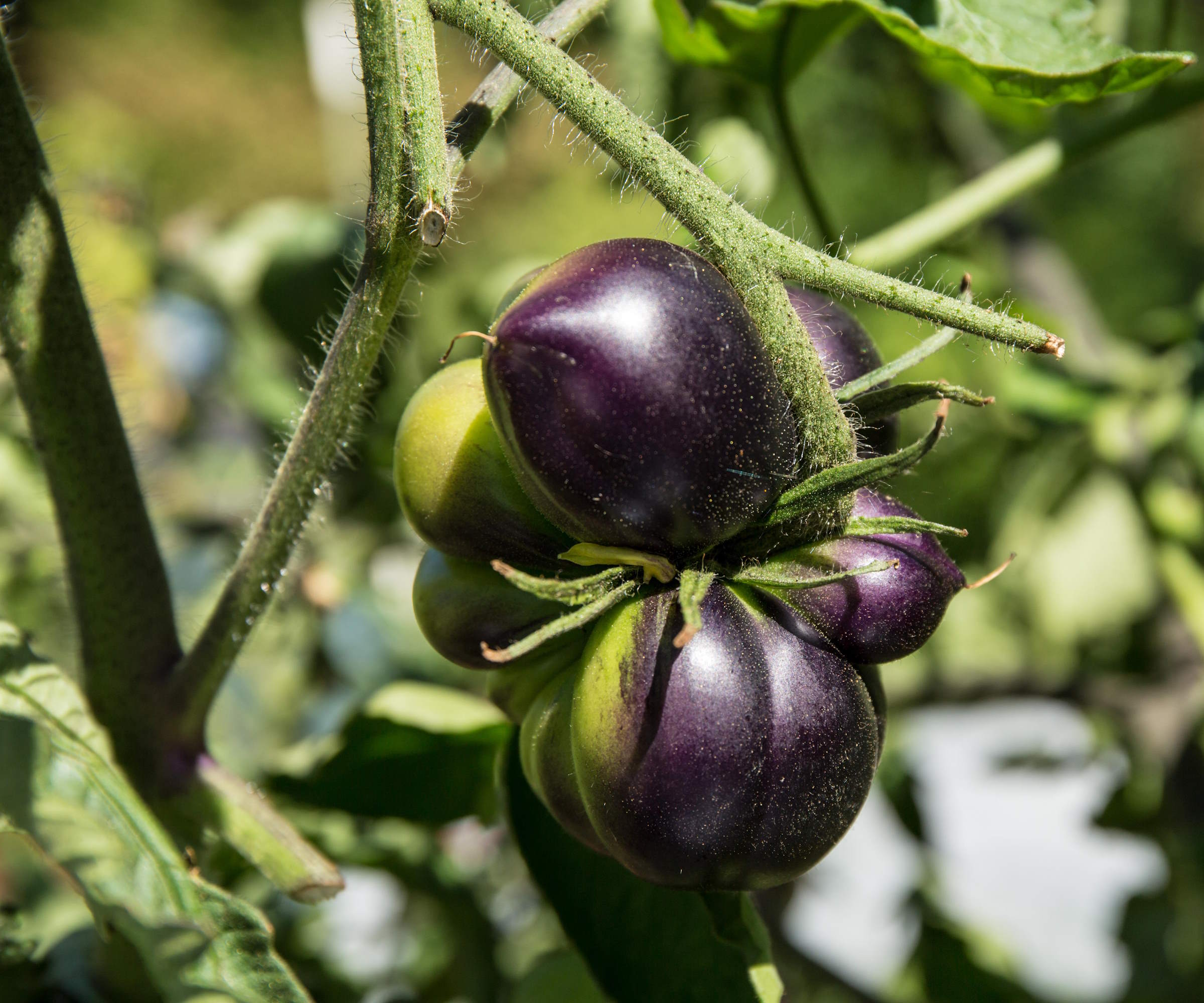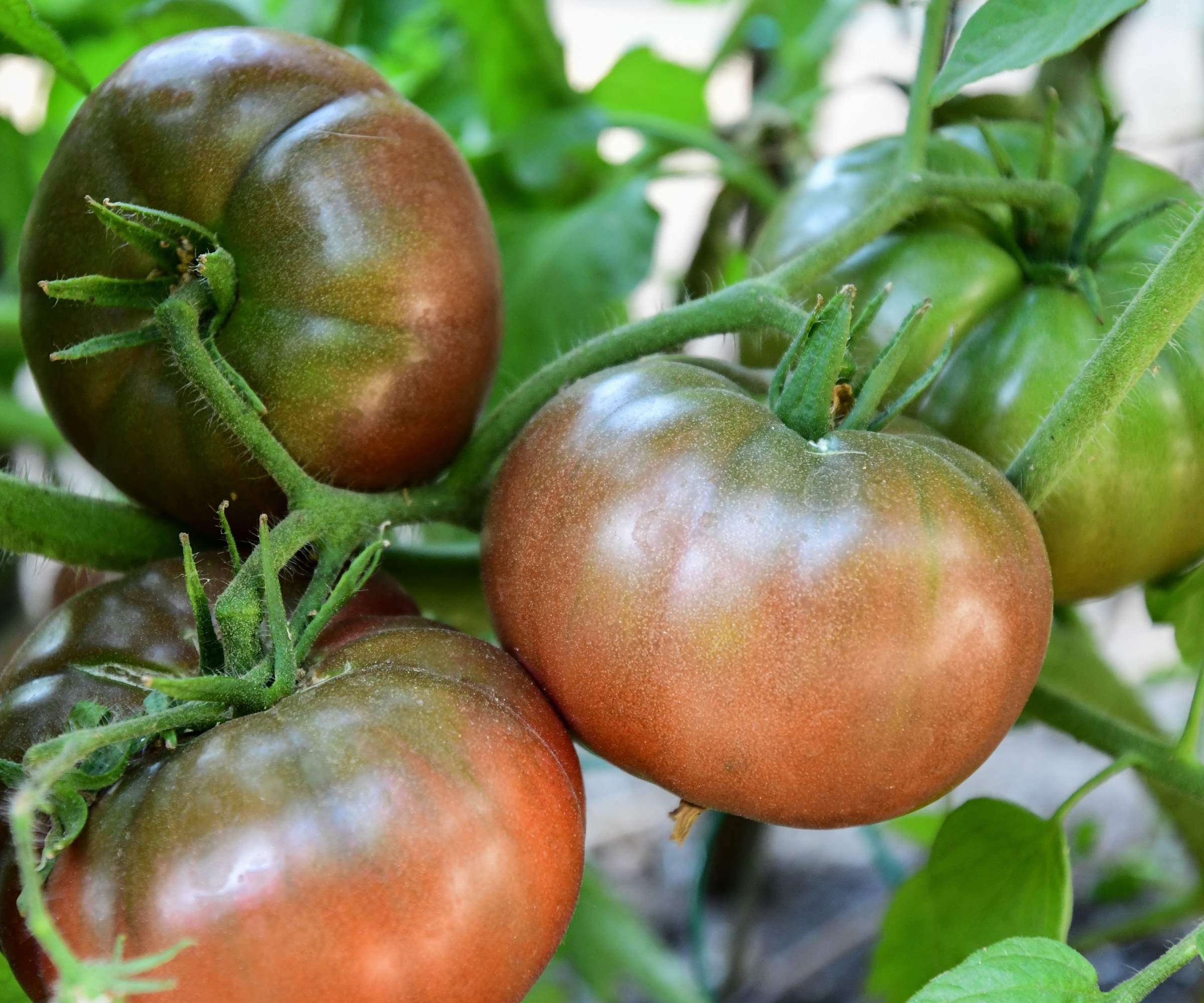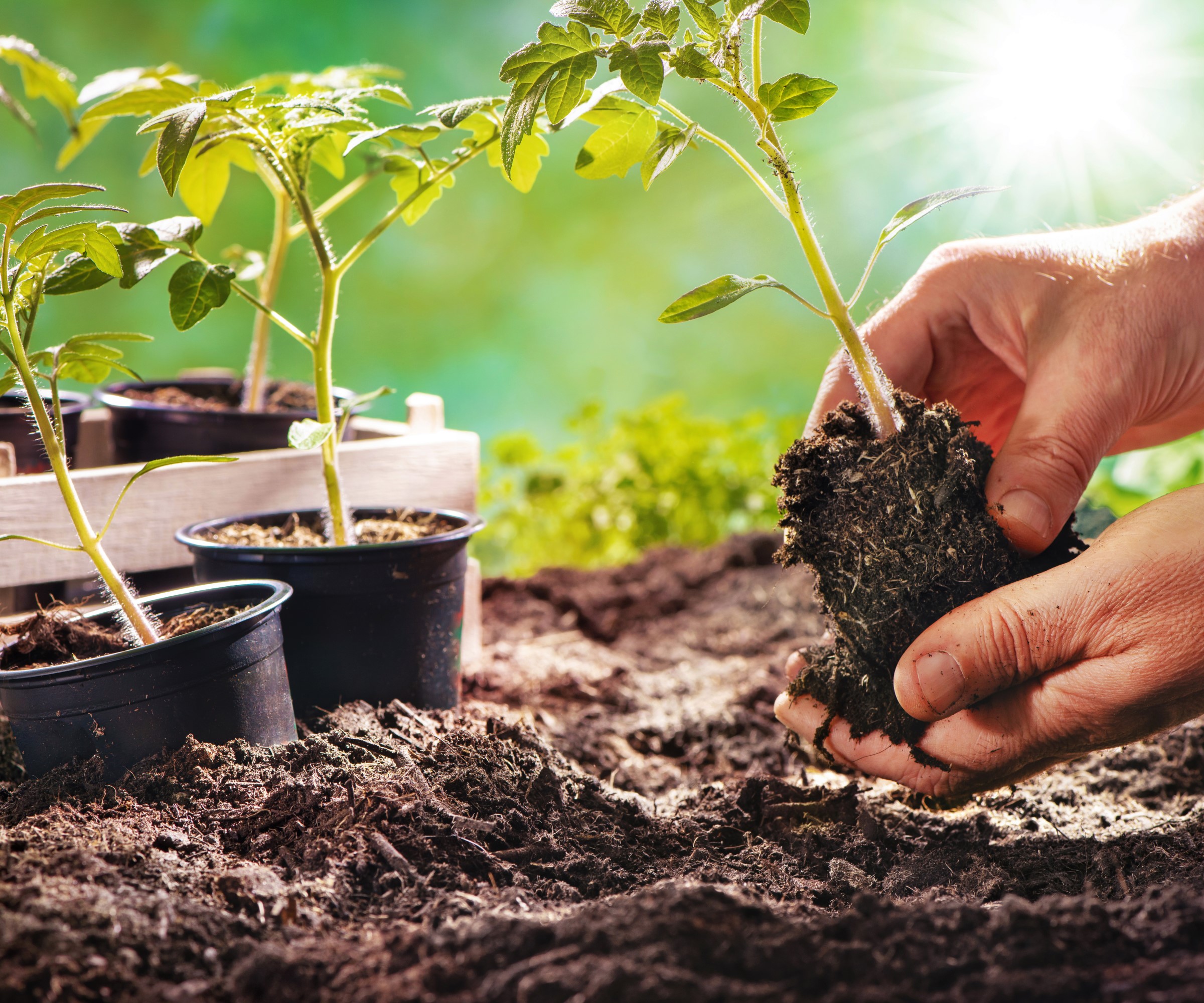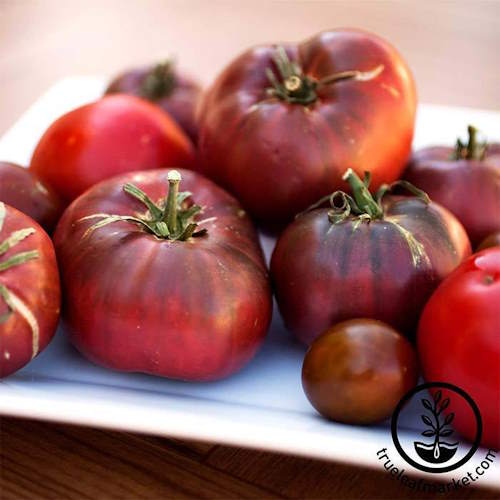How to grow heirloom tomatoes – and why should you choose such historic and proven varieties?
What exactly are heirloom tomatoes and are they difficult to grow? We answer these questions, and more


Tomatoes are one of the world’s favorite crops to grow and some growers swear you cannot do better than growing heirloom tomatoes. But what are heirloom tomatoes, and are they difficult to grow?
These heirloom varieties are more old-fashioned than the modern hybrid cultivars you often see for sale and come in shapes and colors not normally seen on grocery store shelves. There is a wide range of heirloom tomatoes to grow, that includes funky colors and large and ridged fruits among many different varieties.
If you are planning to grow tomatoes this year, you may already have your favorite types. However, if you are seeking out new varieties and flavors to try, heirloom tomatoes are worth experimenting with.

There is a wide and varied choice of heirloom tomatoes to grow
Heirloom vs hybrid tomatoes
You may find yourself asking, what are heirloom seeds and why should they impact my decision on what tomatoes to grow? Heirloom tomato varieties have been around for many years and lots of growers prefer them as they have been passed down through generations and are consistent in quality.
Hybrid tomatoes have been specially bred to have certain desirable traits by cross-pollinating different varieties. They are prolific plants, but are not ‘true to seed’ and if you collect seed from a hybrid variety you will not get the same tomato plant. Harvest tomato seeds from an heirloom variety and the resulting new plant will be a replica.
Are heirloom tomatoes hard to grow?

'Black Beauty' is a very dark heirloom tomato to grow
When you are planning a vegetable garden, simplicity is fundamental. Whether you plan on growing them in the ground, growing tomatoes in pots, or even growing your tomatoes in buckets, you want peace of mind knowing they are simple to grow and get a reliable crop from.
The term heirloom variety need not strike fear into any gardener, whether a newcomer to the hobby or with years of experience. If you have grown tomatoes before then you can easily have success again, grow them somewhere warm, keep them well-watered and fed, and you can get a good harvest.
Design expertise in your inbox – from inspiring decorating ideas and beautiful celebrity homes to practical gardening advice and shopping round-ups.
However, the truth is that there are pros and cons to growing heirloom tomatoes. Charmaine Peters is the Farm Director at Arden and has grown heirloom varieties of tomatoes for many years. She hails the ‘diverse’ shapes, sizes, and colors that heirloom tomatoes come in, but admits there are areas in which hybrid varieties are superior.
‘Heirloom tomatoes have not undergone the selective breeding process, so they may be less resistant to diseases and don’t yield as well as hybrids,’ says Charmaine. ‘Since heirloom tomatoes are more vulnerable to common diseases such as blight, wilts, and viruses, new gardeners might find them more challenging to manage.’
However, just because they are not as prolific and disease-resistant as modern hybrids, there are still some fantastic reasons to add heirloom varieties to your seed sowing schedule for the year.
‘If you find that you love a particular tomato variety and would like to save your seeds so that you can replant them every year without buying new seeds, then heirloom is the way to go,’ recommends Diane Kuthy from How To Grow Everything.
‘Another benefit of saving and replanting heirloom seeds is you choose the best fruits and best seeds from your plants to replant every year. By saving seeds from the strongest plants every year, you will increase the strength, disease resistance, and general health of future plants.’

Diane Kuthy is the founder and lead plant expert at How To Grow Everything, a collection of comprehensive grow guides for every plant and vegetable. Diane has over 10 years of gardening experience and she currently manages a five-acre farm, with a four-season greenhouse and over 50 perennial fruit and vegetable varieties.
Where to plant heirloom tomatoes

'Cherokee Purple' heirloom tomatoes are grown for the dark flesh and skin
No matter what type of tomatoes you plant, they are a crop that has specific requirements to get right. Giving them the right amount of light and heat is going to be crucial to getting a great tomato harvest - and that is what all the effort you put in is for. So do not make the tomato growing mistake of planting them in the wrong location, it could mean all the time and work for scant reward.
- Heirloom tomatoes like sun and warmth. Plant heirloom tomatoes in a sunny spot, whether indoors or outdoors. They want 6-8 hours of direct sunlight per day to grow strongly.
- Heirloom tomatoes want temperatures of around 70°F to 80°F and will not be happy if the temperature drops below 55°F. They are a crop to grow as part of your greenhouse ideas in cooler climates and outdoor growing is limited to those in hotter US hardiness zones.
- The crop wants to be planted in a soil type rich in nutrients and well-draining, ideally with a pH of 6-7. Adding organic matter, such as compost or well-rotted manure, to the site before planting can boost the nutrient levels and soil health.
- Give heirloom tomatoes space in which to grow. Depending on the variety, they can reach up to 10 feet tall and 4 feet wide. Give them room to develop and leave space around the plant to make harvesting easier.
- Most heirloom tomatoes are vining varieties and will need support to grow up. This can be a tomato cage, trellis, stake, or string running from the ground to a top support.
How to grow heirloom tomatoes from seed

Grow heirloom tomatoes in a sunny spot in the garden, or indoors in a warm and protected environment
Growing heirloom tomatoes is a simple process and plants can be started indoors. Tomato can be sown early - you can sow from January onwards - but earlier sowings will need extra heat and light. For most growers, planting the vegetable in March or April gives you a good time to get ahead of the season.
When it comes to selecting seeds to sow, Charmaine Peters recommends choosing varieties ‘well-suited to your specific growing conditions’ to guarantee the best results. She advises: ‘Get the seeds from your local nurseries, farmers' markets, or community seed swaps to ensure these heirloom varieties thrive well in your region.’
To sow seeds indoors, put the heirloom tomato seeds in pots or trays on the surface of a good potting mix and cover them with a thin layer of more compost or vermiculite. Place the seeds somewhere warm, ideally from 70-75°F and keep moist. Pot up seedlings into a larger pot size once they get large enough to handle and transplant seedlings into their final position when they are around 12 inches tall.
Discover the full range of heirloom tomato seeds available at True Leaf Market
Shop heirloom seeds
Tips for caring for heirloom tomatoes

A 'Chocolate Stripe' heirloom tomato has stunning dark stripes
Keep a close eye on heirloom tomatoes for when to water plants. They require lots of moisture to grow, especially if they are grown as part of a vegetable container garden.
The soil wants to be consistently moist, but not sitting too soggy as overwatering can cause the thick skins of heirloom tomatoes to split and increase the risk of blossom end rot. Mulching around plants can help retain moisture in the soil and also play a role in helping to combat some disease risks.
‘Water can spread disease when the soil splashes onto plants,’ says Charmaine Peters. ‘Mulching tomato plants creates a protective barrier between the soil and the leaves of plants. It reduces the risk of diseases reaching the leaves. Use organic mulch around the base of your tomato plants, such as straw, leaves, or grass clippings.’
Heirloom tomatoes are hungry plants that require a lot of nutrients to grow and develop fruits. A plant with yellow tomato leaves may suffer from a lack of nutrients. To fertilize tomatoes, it is beneficial to use a balanced slow-release fertilizer at the time of planting, followed by a high-potassium liquid tomato feed once the plants start flowering - to be mixed with water and added every 7-10 days. Such a liquid feed for growing tomatoes is this liquid tomato feed, available at Amazon.
As mentioned earlier, heirloom tomatoes are less resistant to tomato diseases than modern hybrid types, so it is important to regularly check plants for any signs of disease, and deal with issues quickly. Charmaine Peters advises: 'If you find a leaf or tomato touching the ground, it may have picked up a disease spore. Remove any affected leaves or fruits immediately to prevent the spread of disease.'
Prune tomato plants regularly as they grow to improve air circulation and focus the plant’s energy on developing and ripening fruits. The majority of heirloom tomatoes are indeterminate varieties, also known as vining types, that form large plants and benefit from being trained to climb as a single-stemmed plant. Remove suckers that form between the main stem and side branches often and prune off lower leaves as the plant grows to help fruits ripen and reduce the risk of foliage diseases.

Charmaine Peters is the Farm Director at Arden, an Agrihood community in South Florida. She is an experienced farmer and a passionate advocate for health, nutrition, and supporting local communities with organic food.
FAQs
How long do heirloom tomatoes take to grow?
Heirloom tomatoes can take around 60-80 days to go from sowing the seed to getting the first harvest of fruits. The exact time will depend on the variety, when the seed was sown, the level of water and feed provided, and the conditions during the season.
Will heirloom tomatoes ripen off the vine?
Heirloom tomatoes can continue to ripen off the vine, if they are picked off the plant once the base of the fruit starts turning in color. The fruits will taste best if they are left to ripen on the plant, but under-ripe tomatoes can be ripened on a sunny windowsill or placed in a paper bag - ideally with a ripe tomato or banana to speed up the ripening process.
It can be beneficial to use companion planting when growing heirloom tomatoes, it can help deter pests and entice pollinators to boost your harvest. One fantastic choice for tomato companion planting is growing basil alongside the crop, as the aromatic herb repels several tomato pests and is reputed to improve the flavor of tomatoes.

Drew has worked as a writer since 2008 and was also a professional gardener for many years. As a trained horticulturist, he worked in prestigious historic gardens, including Hanbury Hall and the world-famous Hidcote Manor Garden. He also spent time as a specialist kitchen gardener at Soho Farmhouse and Netherby Hall, where he grew vegetables, fruit, herbs, and cut flowers for restaurants. Drew has written for numerous print and online publications and is an allotment holder and garden blogger. He is shortlisted for the Digital Gardening Writer of the Year at the 2025 Garden Media Guild Awards.


